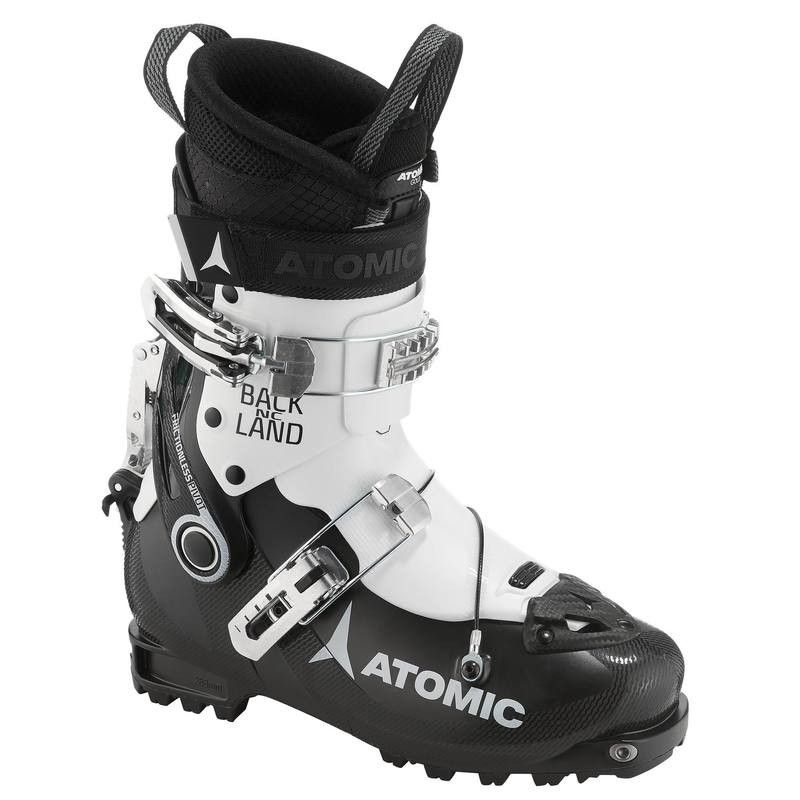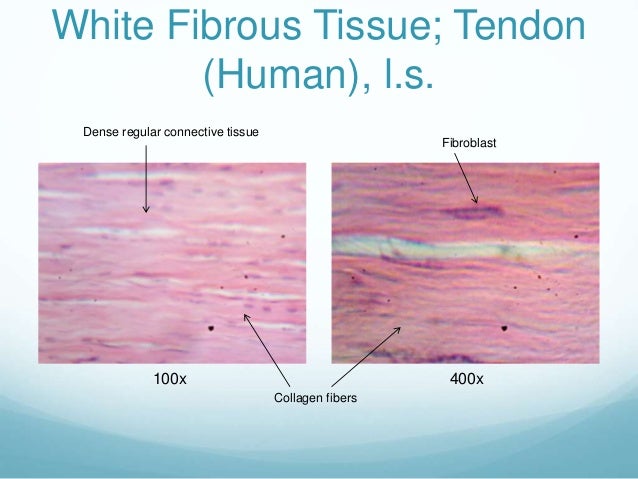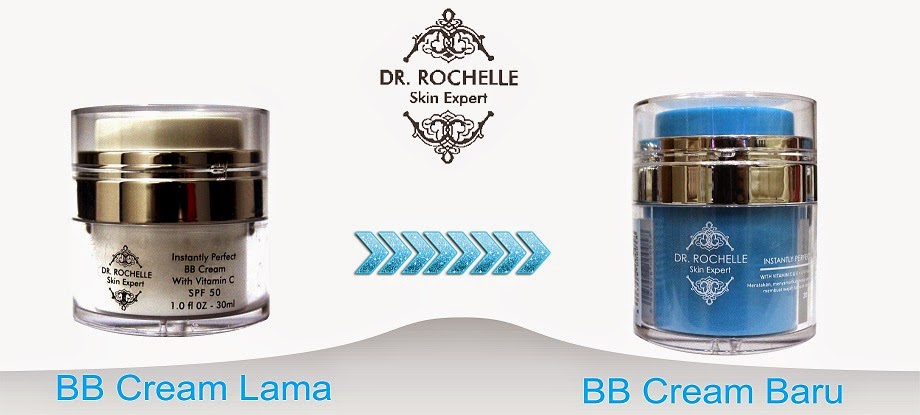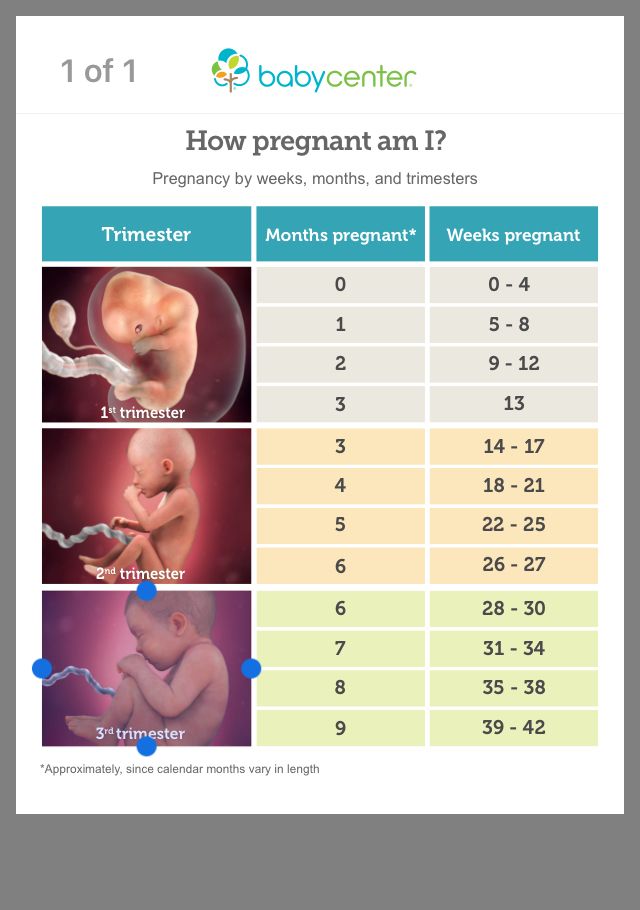How to size ski boots for a child
Kid Ski Boots: Tips for Fitting
Twitter Facebook YouTube Pinterest +
↔
Today I want to share some tips on fitting your kid for ski boots. Obviously, any one of us can drive down to the local ski shop and have a skilled salesperson do it for us.
But if you are like us, and trying to get the family skiing on a dime, we rely heavily on ski swaps, consignment shops, clearance sales, and classified ads to outfit our kids in ski gear every winter. And most these venues DON’T come with a trained boot fitter.
If you are new to The Kid Project, I also want to introduce you to our “Ski Schooling” series. This series focuses in on how to ski with kids, specifically, how to do it yourself. I am not saying this is for everyone or every family. But many of us are trying to go the cheap route – ski swaps for gear, hand-me-downs, and self-instruction. If this is you, welcome!
Tips for Fitting Your Kid’s Ski Boots
Here are the steps I go through when fitting my kids for boots:
- When I am completely clueless on where to start regarding size, I refer to an online chart first or size my child’s foot at the ski rental shop ahead of time. A chart like this one from Level 9 Sports can be a great place to start: Chart for Sizing Ski Boots.
- Remove the boot insert from the shell. Have the child insert their foot into the shell, move their toes towards the front of the boot so they lightly bump the front. Have them flex forward slightly as if they were skiing. There should be 5/8 – 1 inch behind the heel. Or more simply – Two fingers stacked together should fit behind the heel and shell. Change sizes accordingly until you find a match.
- Now put the liner back in the boot. Have the child put the boot on, buckle it, stand up and flex as though they were skiing again. Have them walk around and spend some time in the boot.
 How does it feel? This part is largely subjective and often times a boot will feel tight even though it is sized correctly. On the other hand, if your child has a wide foot, it really could be too tight. Boot stretching at an actual ski shop or going up a size might be advisable.
How does it feel? This part is largely subjective and often times a boot will feel tight even though it is sized correctly. On the other hand, if your child has a wide foot, it really could be too tight. Boot stretching at an actual ski shop or going up a size might be advisable. - Pay some attention to flex ratings on boots. This is the general rule of thumb: The more advanced the skier, the higher the flex rating. Make sure your beginner/young skiers have a lower flex rating, as well as any child that is light. Most Junior Race Ski boots have a flex rating of 70-90. Most beginner skiers under the age of 6 will want a boot that rates much lower. In laymen’s terms? Have your kids flex in the boots by bending at the knee. Their weight should be on the ball of the foot. If they can’t do this it will be a problem.
A Caution
Don’t stress about this!
My kids have been skiing since they were two and are now ages 6, 8 and 10 respectively.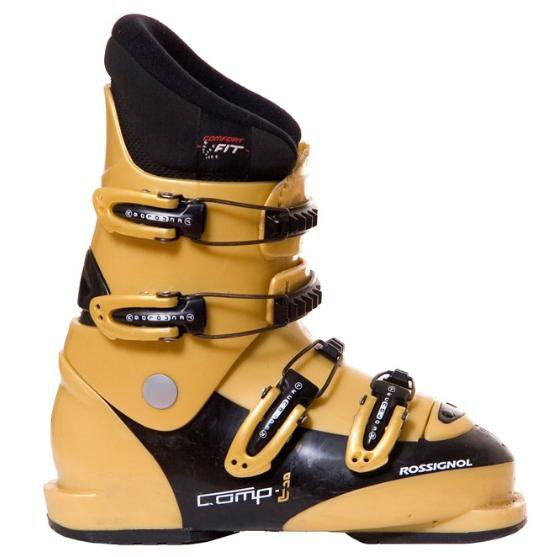 JUST THIS YEAR I learned I had been sizing them wrong all along and all their boots have been huge for years!
JUST THIS YEAR I learned I had been sizing them wrong all along and all their boots have been huge for years!
Lesson? It might have been more difficult for them to flex or get on edge, but they all learned to ski and are pretty decent skiers too. So maybe it doesn’t matter so much if we get it perfect?!
Check out this post by my friend Kristin on fitting kid ski boots and how to know if your kid’s feet are warm: How do I tell if my kid’s boot fits properly and more importantly if their feet are warm!
What are your tips for sizing your kids boots and/or finding great deals on ski boots for kids?
Ski Boots, Skiing 5 Comments Permalink
Kids Ski Boots Size Chart & Calculator - How To Size Kids For Skis?
Taking your kids on their first ski trip is a wonderful experience. It is very rewarding to see them progress from rolling around in the snow to linking turns and charging down the mountain.
But to ensure your kids have the best experience, you need to put them in the right gear. A pair of quality and comfortable ski boots should be at the top of your list for ski equipment, whether renting or buying.
However, comfort is the main priority when it comes to ski boots. If your children’s ski boots don’t fit properly, they won’t enjoy skiing at all, and it may put them off for life.
When buying or renting kids’ ski boots, you need to take time to ensure you get the right ones. The shop assistant should have the knowledge and skills to select the correct ones, but it is worth knowing some basics to be 100% sure.
Image by FamVeld from Shutterstock
Table of Contents
- 1 What To Look For In Kids Ski Boots
- 1.1 1. Pay Attention To The Ski Boot’s Weight
- 1.2 2, Make Sure They Are User Friendly
- 1.3 3. Look For Removable Liners
- 1.4 4. Consider The Ski Boot’s Flex
- 1.5 5. Get The Right Size
- 2 How To Find The Right Size Kids Ski Boots
- 3 Tips For Fitting Kids’ Ski Boots
- 3.
 1 1. Choose A Pair Of Boots Using The Sizing Chart
1 1. Choose A Pair Of Boots Using The Sizing Chart - 3.2 2. Try The Boots On With The Liner Removed
- 3.3 3. Put The Liner Back In
- 3.4 4. Ensure They Have The Right Flex
- 3.
- 4 Recommended Kids’ Ski Boots
- 4.1 1. Rossignol Comp J1
- 4.2 2. Fischer RC4 60 Jr. Thermoshape
- 4.3 3. Rossignol Hero J4
- 4.4 4. Salomon S/Max 65
- 4.5 5. Salomon QST Access 70 T
- 5 Final Thoughts
- 6 Enjoyed Kids Ski Boots Size Chart & Calculator – How To Size Kids For Skis? Share it with your friends so they too can follow the kayakhelp journey.
- 6.1 Share on Pinterest
Image by gorillaimages from Shutterstock
A poorly fitting pair of ski boots can ruin anyone’s day on the mountain. In fact, it may only take a few minutes of wearing them before they cause discomfort and pain.
The wrong ski boots may pinch, have pressure points, and be too tight, heavy, and difficult to put on.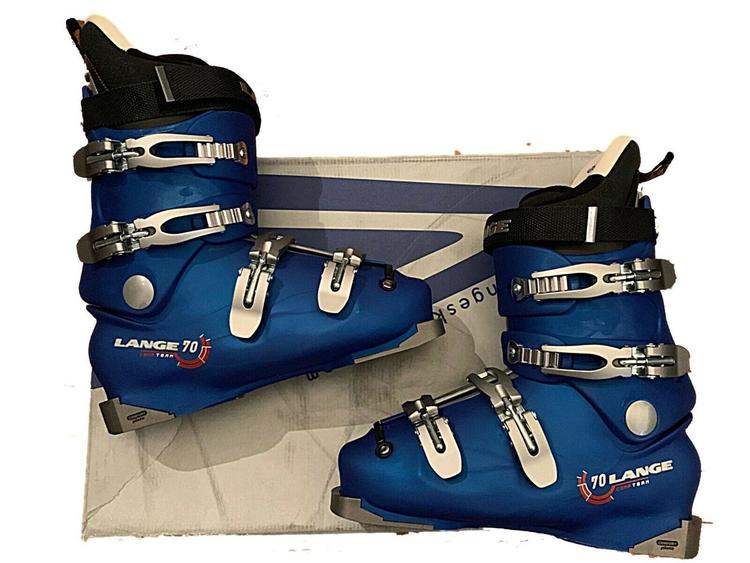 If your child (or you) experiences any of these characteristics, it can spell game over very quickly for their day of skiing.
If your child (or you) experiences any of these characteristics, it can spell game over very quickly for their day of skiing.
Therefore, we have put together some top tips and things to look out for when it comes to fitting your kids with the right ski boots. We have even put together a list of recommended kid’s ski boots.
1. Pay Attention To The Ski Boot’s WeightIf your child is petite and light, they will need more lightweight ski boots than heavier kids. You will find that some kids’ ski boots under 1 kg will give plenty of control and stability, depending on the brand.
Ski boot brands will reduce weight by using thinner outer shells. But they compensate for the flex with additional support and extra buckles.
2, Make Sure They Are User FriendlySki boots can be pretty challenging to get on and off, and kids find it especially difficult. Look for kids’ ski boots with self-shaping tongues and plenty of adjustability.
If your kid’s ski boots are awkward to put on or close and open the buckles, you will have more to do. If they are easy to use, your child will be able to put them on and remove them themselves.
You can buy rear-entry kids’ ski boots, but these are only suitable for young kids and should be avoided for older kids.
Another useful feature to look out for is “walk mode.” This unlocks the boot to make it more flexible and easier to walk in, which is advantageous when trying to get your child to ski school on time.
3. Look For Removable LinersYour kids’ ski boots should have removable liners. As children are smaller and closer to the snow than adults, their boot liners can quickly become wet, especially when the snow is deep or slushy.
By buying ski boots with removable liners, you can dry them out properly. This way, your child doesn’t have to start the following day with cold, wet feet, setting them up for a bad day.
Often ski boot liners mold to your child’s feet.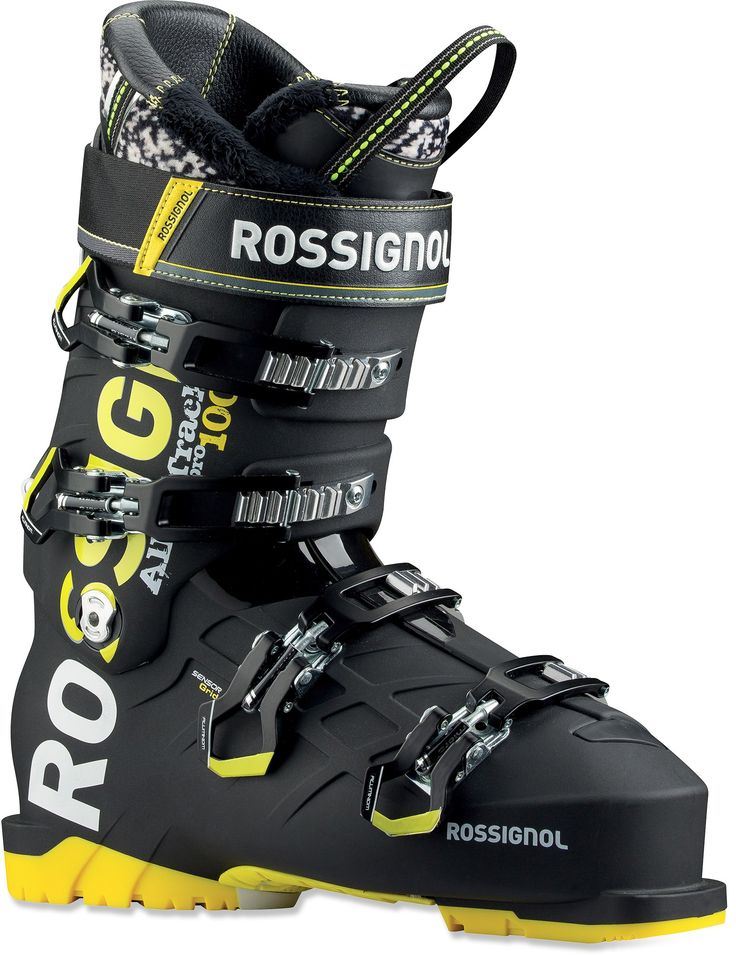 These improve comfort and are well worth looking out for in your child’s new ski boots.
These improve comfort and are well worth looking out for in your child’s new ski boots.
As kids’ feet are still growing, look for boots that are not too stiff. Softer ski boots won’t have as much control as stiffer ones, but that isn’t the main priority at this early stage.
Softer ski boots are far more comfortable than stiffer ones. They also have a shorter shaft, enhancing comfort for this formative time in your little skier’s life.
Older and more experienced kids will gain from wearing slightly stiffer ski boots. They provide more stability and control, which is needed for fast turns and aggressive skiing.
5. Get The Right SizeYour kid’s ski boots must fit correctly and offer an appropriate amount of support. You can buy adjustable kids’ ski boots with telescopic shells and liners that expand.
These adjustable ski boots give your child room to grow. Some of them can expand up to four sizes, so you don’t have to buy new ski boots too often.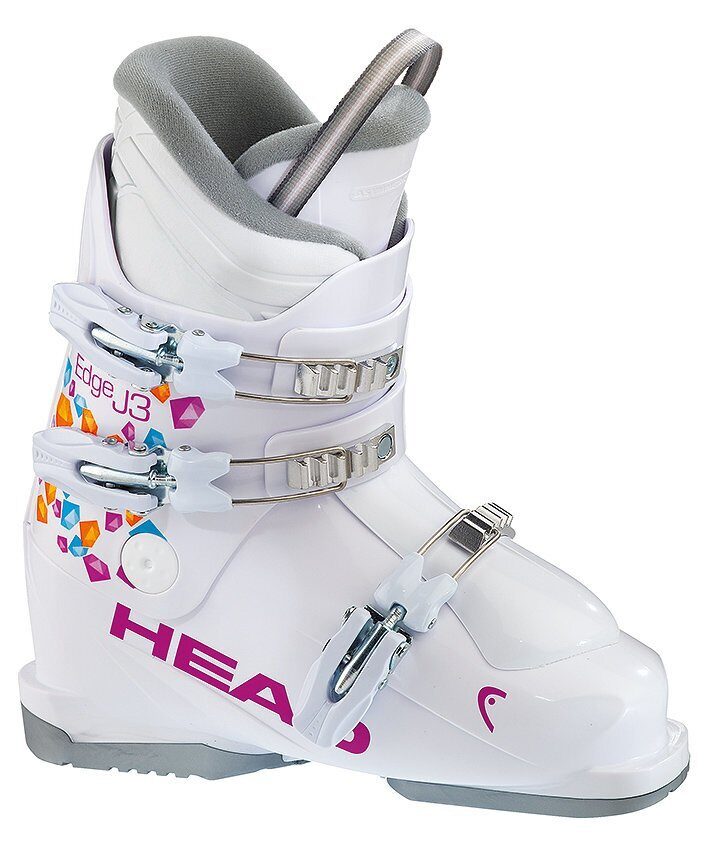
You may be tempted to buy ski boots that are too large, so your child can grow into them. This is a very bad idea, as there will be too much movement inside the boot, resulting in a lack of control, which is very dangerous.
When your child grows out of their ski boots, make sure you replace them immediately. Ski boots that are too small can be agonizing and will make your child’s time on the mountain a misery.
How To Find The Right Size Kids Ski BootsImage by yvontrep from Shutterstock
Kids’ ski boot sizes are on the Mondopoint system, precisely the same as adult ski boots. So don’t expect to see the regular kid’s shoe sizes when buying ski boots.
The reason for this is that footwear sizes for street and sports shoes are not standardized. Therefore, manufacturers can make their own minds up about how they size their products.
Ski boot manufacturers use the Mondopoint system, as it is the world’s only standardized system for sizing ski boots.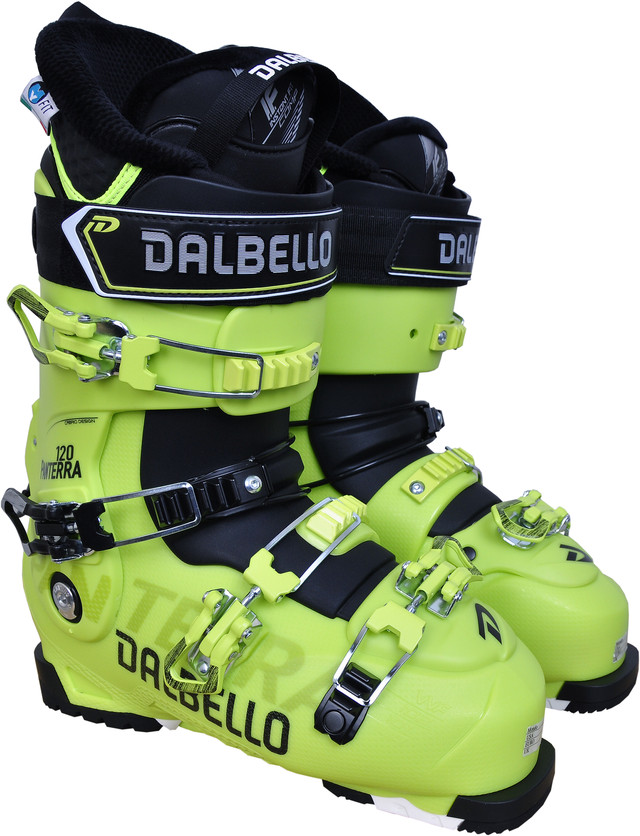
The Mondopoint sizing system is solely based on length. Check out the kids’ ski boot size chart below for a starting point for your kid’s ski boots.
However, you also need to pay attention to the last. The “last” is the width of the ski boot, which makes a massive difference to comfort.
Kids Ski Boot Size Chart From Intersport
| Mondopoint boot size chart for children based on ISO specification ISO/TS 19407:2015 |
| Mondopoint | Foot length in cm | EU | UK | US |
| 120 | 12 | 19.5 | 3.5 | 4 |
| 125 | 12.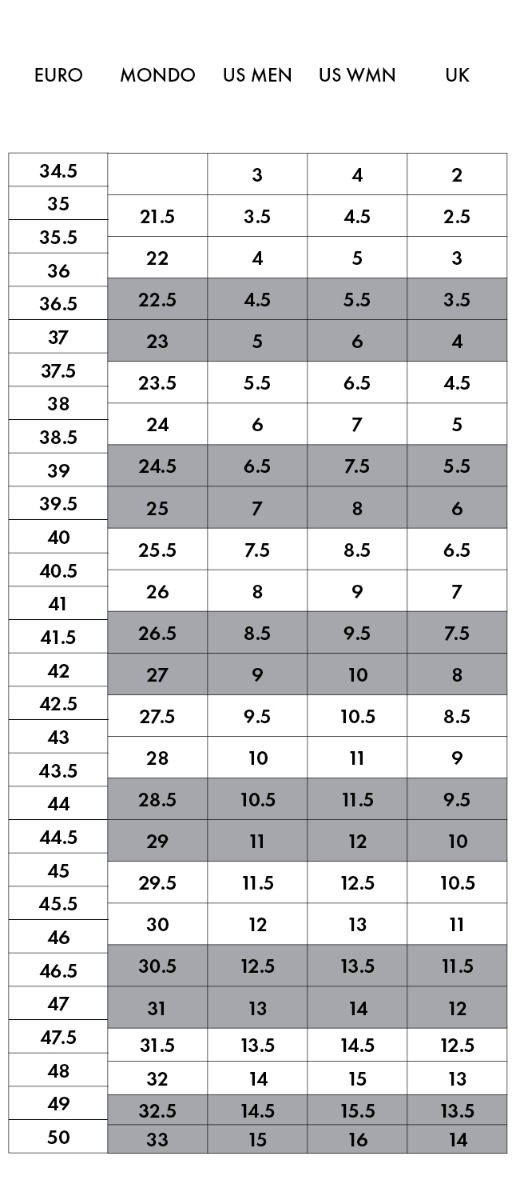 3 3 |
20 | 4 | 4.5 |
| 12.7 | 20.5 | 4.5 | 5 | |
| 130 | 13 | 21 | 5 | 5.5 |
| 13.3 | 21.5 | 5.5 | 6 | |
| 135 | 13.5 | 22 | ||
| 140 | 13.8 | 22.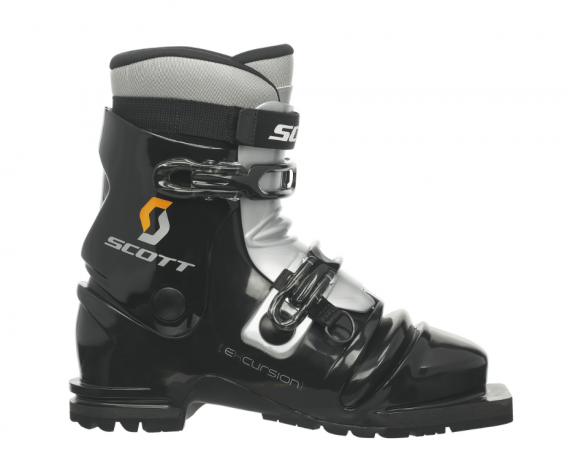 5 5 |
6 | 6.5 |
| 14.2 | 23 | 6.5 | 7 | |
| 145 | 14.6 | 23.5 | 7 | 7.5 |
| 14.8 | 24 | |||
| 150 | 15 | 24.5 | 7.5 | 8 |
| 155 | 15.4 | 25 | 8 | 8. 5 5 |
| 15.7 | 25.5 | 8.5 | 9 | |
| 160 | 16 | 26 | 9 | 9.5 |
| 16.4 | 26.5 | |||
| 165 | 16.6 | 27 | 9.5 | 10 |
| 170 | 16.9 | 27.5 | 10 | 10.5 |
17. 3 3 |
28 | 10.5 | 11 | |
| 175 | 17.6 | 28.5 | 11 | 11.5 |
| 180 | 17.9 | 29 | 11.5 | 12 |
| 18.2 | 29.5 | |||
| 185 | 18.5 | 30 | 12 | 12.5 |
| 18.8 | 30. 5 5 |
12.5 | 13 | |
| 190 | 19.2 | 31 | 13 | 13.5 |
| 195 | 19.5 | 31.5 | 13.5 | 1 |
| 19.8 | 32 | |||
| 200 | 20 | 32.5 | 1 | 1.5 |
| 205 | 20.4 | 33 | 1. 5 5 |
2 |
| 20.7 | 33.5 | |||
| 210 | 21 | 34 | 2 | 2.5 |
| 21.3 | 34.5 | 2.5 | 3 | |
| 215 | 21.7 | 35 | 3 | 3.5 |
| 220 | 22 | 35.5 | 3.5 | 4 |
22. 4 4 |
36 | |||
| 225 | 22.6 | 36.5 | 4 | 4.5 |
| 230 | 23 | 37 | 4.5 | 5 |
| 23.2 | 37.5 | |||
| 235 | 23.6 | 38 | 5 |
Image by Soloviova Liudmyla from Shutterstock
The real test of how comfortable ski boots are is once your child puts them on.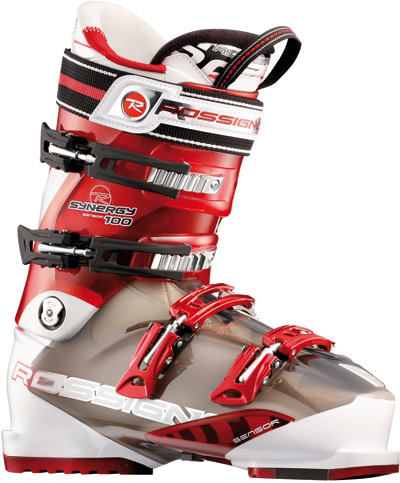 Here are the steps to ensure that the ski boots won’t cause tears on the slopes.
Here are the steps to ensure that the ski boots won’t cause tears on the slopes.
The kids’ ski boot sizing chart is your starting point, but you need to measure your child’s feet to use it.
The most effective way to do this is to have your child stand on a piece of paper. Their heels should be against the bottom edge of the page, and their instep at the inside edge (so their foot is in the corner of the paper).
Mark the end of their big toe and the widest part of their foot on the paper. Then measure the length in millimeters from the bottom of the paper to the mark where the end of the toe was.
This is the length that corresponds to the Mondopoint boot size on the chart.
Once you have the length, measure the width from the edge of the paper to the mark you made for the width. This will give you the last, so you can make an informed decision on the correct width.
2. Try The Boots On With The Liner RemovedThe next step is to pull out the removable liner and for your child to slip their foot into the shell.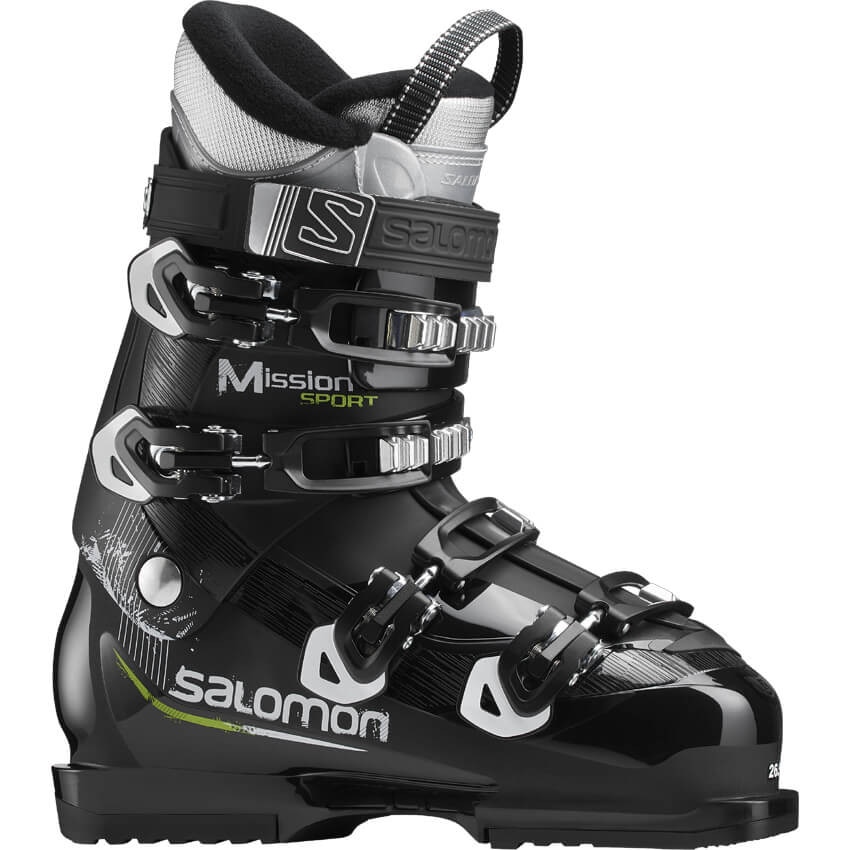
They then need to slide their foot forward until their toes just touch the front of the boot. Get them to flex their knees slightly forward as if they were on the slopes; this should create a gap behind their heel.
You should be able to fit two fingers between the heel and the inside of the shell. If not, accordingly change the boots for ones that give you this gap.
3. Put The Liner Back InOnce you have found a pair of ski boots with the appropriate gap, put the boot liner back in. Then get your child to put the boots on and buckle them up as if they were going skiing.
They should then walk around for a bit and spend some time standing in the boots. This will give them time to get a good feel for the boots and notice if there are any pressure points, discomfort, etc.
You need to ask your child how the boots feel, as it can be pretty subjective. Even boots that have been sized correctly can feel too tight or too loose.
If the ski boots feel too tight, this could indicate that your child’s feet are too wide for the boot.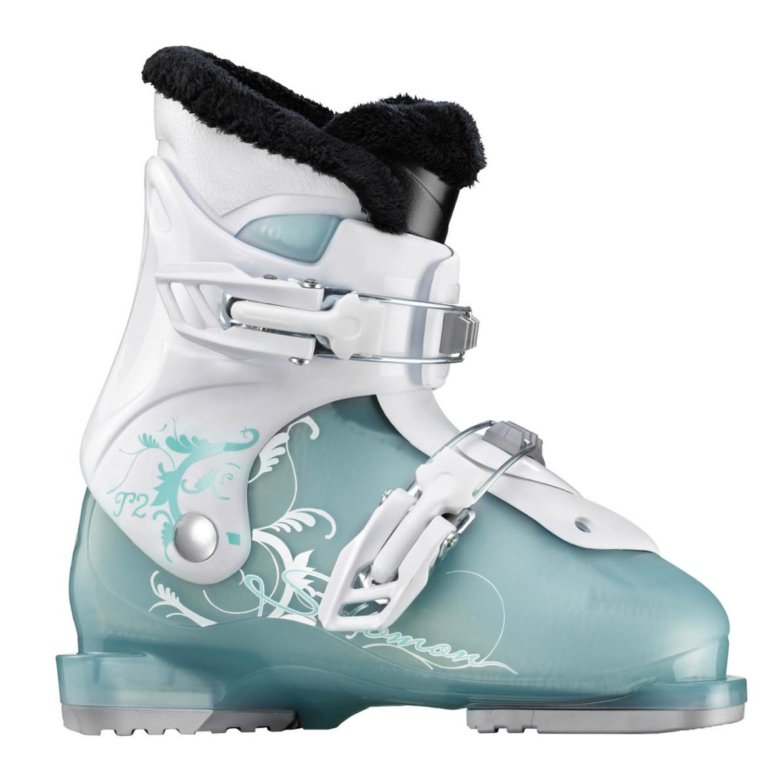 In this case, you may need to find a pair with a wider last. Alternatively, if you are buying them in a ski shop, the shop assistant may be able to stretch the liner to suit.
In this case, you may need to find a pair with a wider last. Alternatively, if you are buying them in a ski shop, the shop assistant may be able to stretch the liner to suit.
It is worth remembering that your child’s feet are still growing. So stretching the liners at this early stage may mean that the boots will be too small pretty soon.
4. Ensure They Have The Right FlexWe mentioned flex earlier, but while your child is wearing the boots, you can better understand how stiff they are and if they are appropriate.
As a general rule, stiffer ski boots are for more advanced and heavier skiers. If your child is a complete beginner or very light, they will benefit from a lower flex rating.
To give you an idea of flex, race ski boots are very stiff and usually have a flex rating of 70 to 90. Most kids younger than six years old will require ski boots with much lower flex ratings.
When your child is wearing the boots, get them to bend at the knee.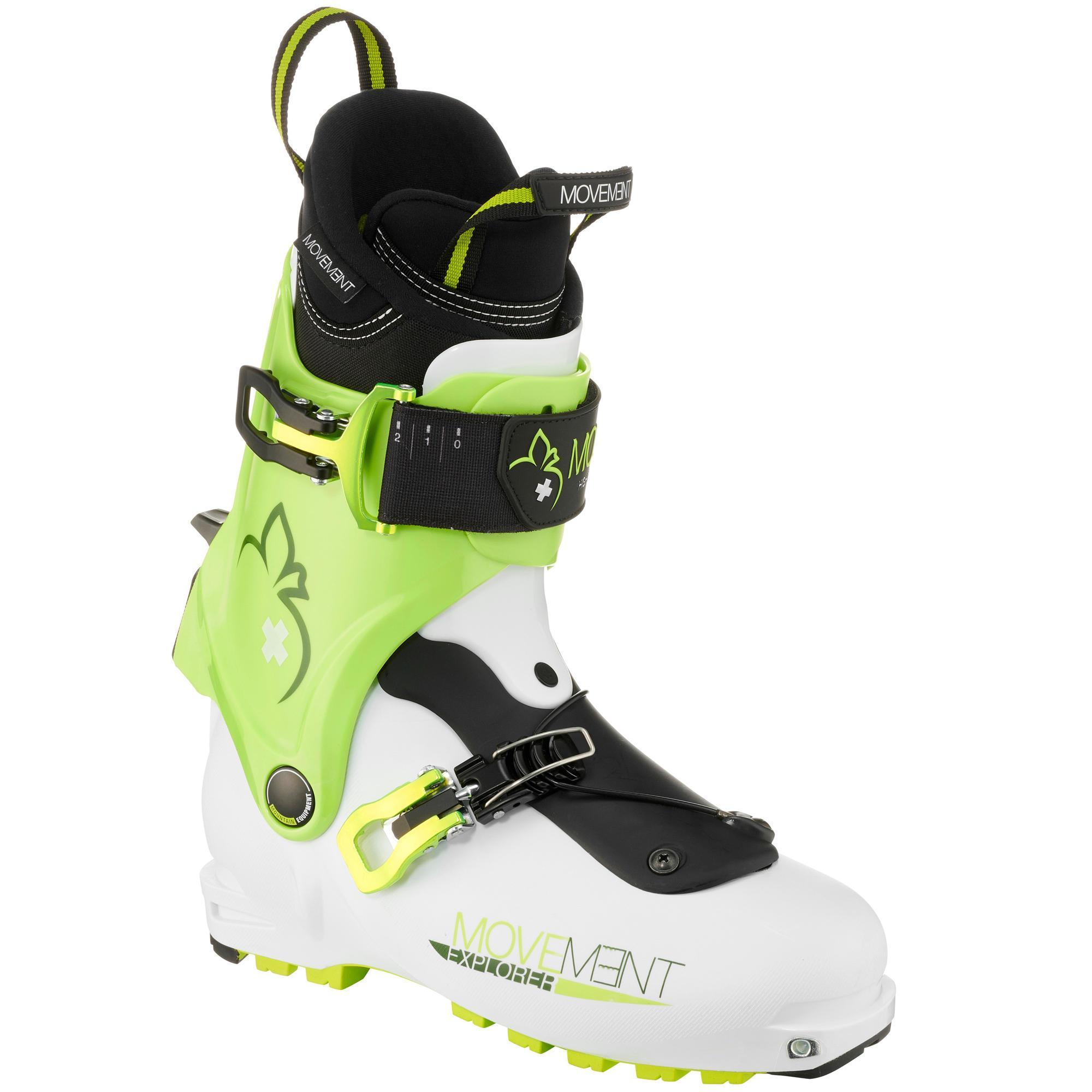 This should put their weight on the ball of their foot; if they cannot do this, they may need a softer boot.
This should put their weight on the ball of their foot; if they cannot do this, they may need a softer boot.
Thumbnail
Title
Rossignol Comp J1 Ski Boots Kid's Sz 9k (15.5) Black
Fischer RC4 60 Jr. Thermoshape Ski Boots Kid's Sz 5.5 (23.5) Black/Black,U19118
Rossignol Hero J4 Kids Ski Boots White 8.5 (26.5)
Salomon S/Max 65 Kids Ski Boots Black/Red Sz 8/8.5 (26/26.5)
Salomon QST Access 70 T Ski Boots Kid's Sz 9/9.5 (27/27.5) Orange/Black
Star Rating
Prime Status
Details
Buy on Amazon
Buy on Amazon
Buy on Amazon
Buy on Amazon
Buy on Amazon
Thumbnail
Title
Rossignol Comp J1 Ski Boots Kid's Sz 9k (15.5) Black
Star Rating
Prime Status
Details
Buy on Amazon
Thumbnail
Title
Fischer RC4 60 Jr. Thermoshape Ski Boots Kid's Sz 5.5 (23.5) Black/Black,U19118
Star Rating
Prime Status
Details
Buy on Amazon
Thumbnail
Title
Rossignol Hero J4 Kids Ski Boots White 8. 5 (26.5)
5 (26.5)
Star Rating
Prime Status
Details
Buy on Amazon
Thumbnail
Title
Salomon S/Max 65 Kids Ski Boots Black/Red Sz 8/8.5 (26/26.5)
Star Rating
Prime Status
Details
Buy on Amazon
Thumbnail
Title
Salomon QST Access 70 T Ski Boots Kid's Sz 9/9.5 (27/27.5) Orange/Black
Star Rating
Prime Status
Details
Buy on Amazon
Recommended Kids’ Ski BootsHere are some superb kids’ ski boots that you may want to consider. We have chosen these examples for their features, comfort, and price.
1. Rossignol Comp J1If your child is still a beginner but is starting to enjoy blue runs, the Rossignol comp J1 is an excellent choice.
Rossignol has made these kids’ ski boots very user-friendly by making them easy to get on and off. They have done this with a single buckle that is easy to use with little fingers.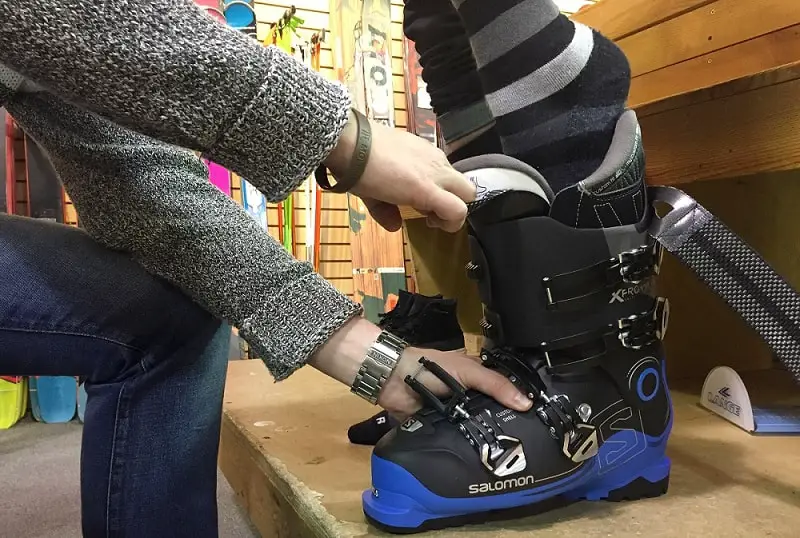
Thanks to the anatomically shaped shell, these kids’ ski boots are also super comfortable. The shells have been carefully made to fit the feet in all the right places.
In addition to this, the liner is nicely insulated to ensure your child’s feet stay warm all day. But the liner’s construction incorporates separate layers and combinations of materials, thicknesses, and densities. This results in a liner that conforms to the foot shape and is quick drying.
2. Fischer RC4 60 Jr. ThermoshapeThe Fischer RC4 60 Thermoshape kids’ ski boots are ideal for progression. The 60 in their name refers to the flex rating, which is pretty soft, making them ideal for young beginner skiers.
Fischer has fitted the RC4 Jrs with four micro-adjust buckles, which gives your child a wide range of adjustments while providing lots of support. The velcro strap enhances the adjustment further, making dialing in the perfect fit effortless.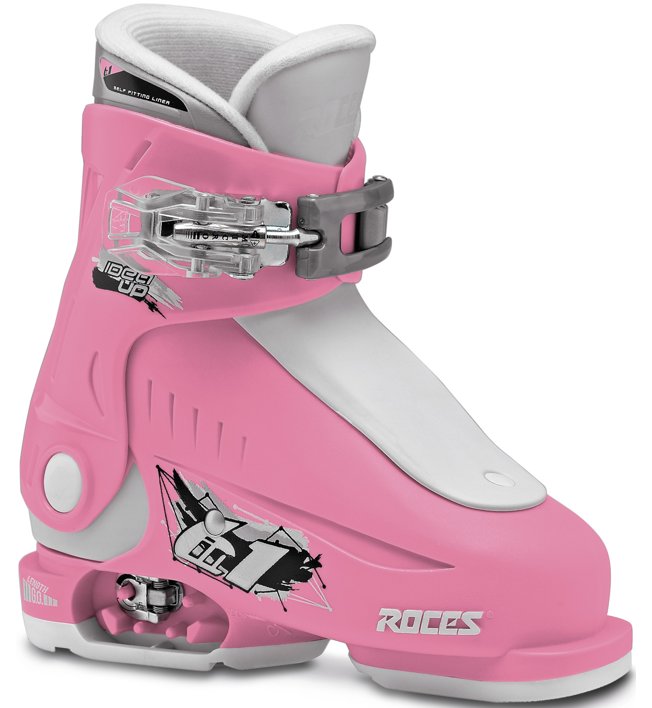
If your child is an aspiring ski racer, they may want to slip into some Rossignol Hero J4s. These kids’ ski boots are designed to help kids develop their carving skills in preparation for racing.
They are pretty soft in their flex rating of 50, so they are best suited to lighter skiers. However, they do offer lots of support, control, and comfort, ideal for young speed demons.
Rossignol has chosen their Comfort Fit liner for the Hero J4. This liner consists of soft materials designed to provide all-day warmth and cushioning.
These kids’ ski boots also feature Sensor Inside, which incorporates the three main balance points of your feet; the big toe, little toe, and heel. This gives unrivaled power and feel for the snow.
This technology is used in World Cup ski race boots and has trickled down to these excellent kids’ ski boots.
Rossignol has made these boots pretty narrow to enhance the contact between the shell and liner for increased control. So if your child has wide feet, these may not be the best choice.
So if your child has wide feet, these may not be the best choice.
The diagonal buckles allow for easy entry, but they also give you a secure and comfortable fit. Their arrangement pulls the heel into a pocket to increase support while skiing choppy snow or at speed.
4. Salomon S/Max 65Salomon has created an outstanding ski boot for kids with the S/Max 65. They have used all the latest technology to make this ski boot lightweight, agile and well-fitting.
The outer shell is thinner than most ski boots, contributing to their lightness. In fact, they are the lightest junior ski boots available, ensuring optimum control and precise turning. In addition to this, the thin shell makes it easy to get in and out of the boots.
Salomon has used a Thermic Fit liner and a shorter cuff. These are specially designed to mold to the shape of young skiers’ feet for greater comfort. The liners are removable and quick-drying, so your child can start their day with warm and dry feet.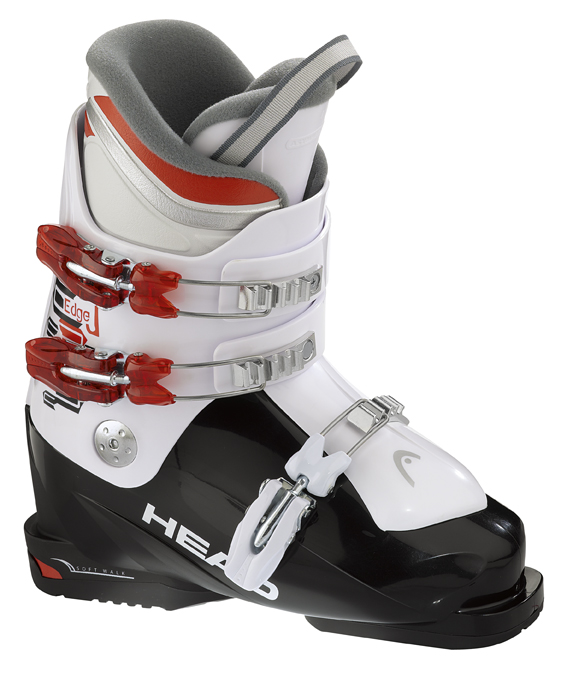
Salomon makes excellent ski equipment and clothing, and they are true to form with the Salomon QST Access 70 T Junior ski boots. These boots are incredibly user-friendly, as they work well both on and off the mountain.
Salomon has given these kids’ ski boots Hike and Ride technology. This is a V-cut release system that provides two modes. You can unlock the backbone to make walking easier and lock it again for skiing.
The backbone is made from lightweight magnesium, which provides excellent rebound and progressive flex.
In addition to this, these ski boots use the Thermic Fit liner. This makes them cozy and comfortable while molding to your child’s feet.
They are slightly stiffer than the other boots we have covered so far, as they are for more advanced young skiers. The characteristics make them ideal for kids who are starting to experience the backcountry and need to hike to the best lines.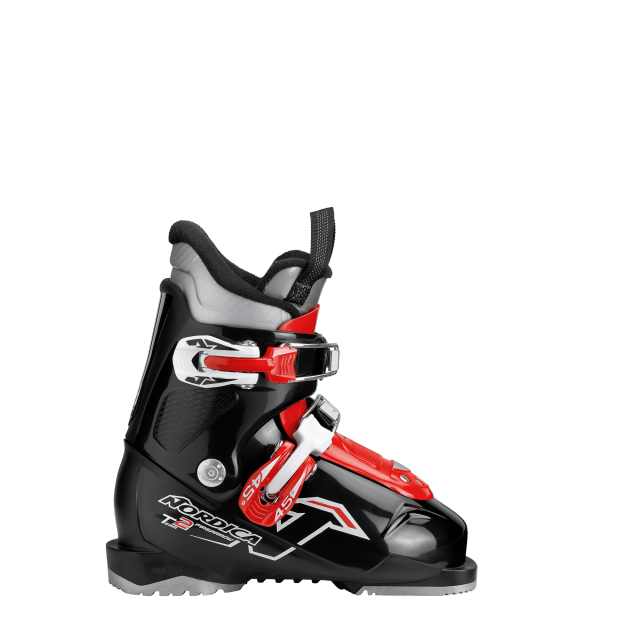
These days kids have many options for their ski boots. In many cases, the technology is the same as the adult’s boots, which gives them a great start to their life on the slopes.
Kids no longer have to put up with poorly designed and low-performing ski boots. But it is essential that you get the sizing right, consider the boot’s flex, and how user-friendly they are.
It is always worth visiting a qualified ski boot fitter to ensure you buy the right boots. Ski boot fitters have the knowledge of both feet and the products available to select the perfect pair for you or your child.
Enjoyed Kids Ski Boots Size Chart & Calculator – How To Size Kids For Skis? Share it with your friends so they too can follow the kayakhelp journey.Share on Pinterest
Author: Peter SalisburyPete is the Owner of KayakHelp.com. Born and raised in Cleveland, Ohio, he grew up kayaking, fishing, sailing, and partaking in outdoor adventures around the Great Lakes.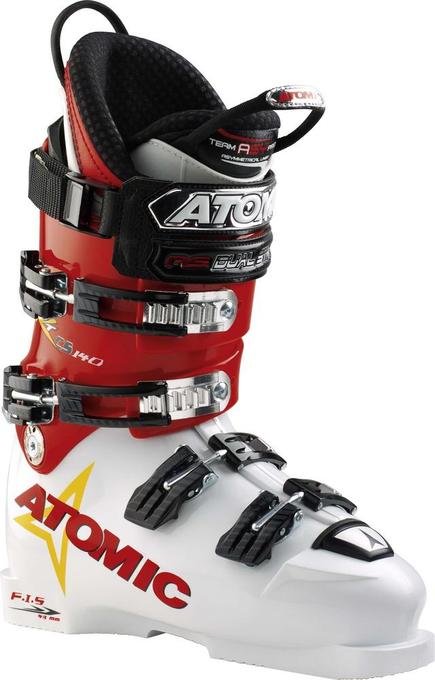 When he’s not out on the water, you can find him skiing in the mountains, reading his favorite books, and spending time with his family.
When he’s not out on the water, you can find him skiing in the mountains, reading his favorite books, and spending time with his family.
How to choose the right ski boots! / Articles
So many things depend on ski boots - skiing safety, ski control, well-being during the day, ease of learning and speed of progress. Boots are the most important part of a ski kit, even more important than the skis themselves, so be careful with your choice!
A large number and variety of lines and models is due to the combination of comfort, rigidity and ease of fit of the boot on the leg, the ability to individually adjust the boot to your needs.
Things to consider when choosing:
· your skill level;
leg size;
shoe width;
Required stiffness;
· purpose of the model and specific features.
1. Level of skiing and experience
It is very important to choose ski boots based on your skill, style and experience of skiing and planned progress.
For beginners and those who prefer calm skiing, the comfort of the model is very important, but stiffness and great control are in the background. The higher the level, the more important is the control and coordination of alpine skiing, and the stiffness and narrowness of the block, the accuracy of the fit of the model, plays an important role.
In the Head collection, boots are divided into 5 levels: for athletes, experts, advanced riders, improving and beginners.
• ATHLETE - competitions, sports disciplines, aggressive style, maximum speeds, prepared slope, ice.
For current or former athletes, for tough prepared competition courses.
Models with a width of less than 98 mm are suitable (the width of the shoe here and below is indicated in size 26.5; with an increase / decrease in size, the width of the shoe increases / decreases proportionally) and a stiffness of 120 for men, for girls from 100.
100% ski control, lightning-fast response, no sizing, boot customization and bootfitting.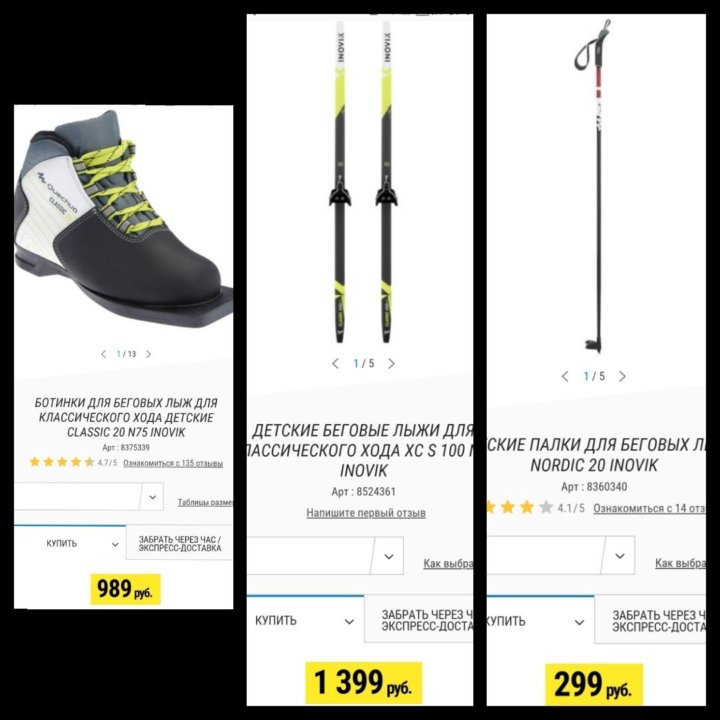
• EXPERT - aggressive style, high speed, slopes in various conditions (prepared, ice, mounds, off-piste).
No matter the condition of the slope, you are great at handling tough morning runs, ice, broken afternoon runs, mounds or fresh dry virgin ground.
Boots with a fairly narrow last less than 100 mm are suitable for you, with a stiffness of 110 for men, from 90 and above for girls. This combination of width and stiffness will provide maximum control on the slope. The size is selected without a margin, fine tuning and fitting of the boot is necessary, boot fitting is recommended.
• ADVANCED – confident arcing, speed above average, tracks in various conditions (prepared, ice, bumps, off-piste).
You are equally at home on a well-prepared and broken track, on a steep slope or on mounds and do not mind riding fresh snow off the track.
Boots with a width of 100 mm or more are suitable for you (depending on the width of your foot, you can choose wider options), with a stiffness of 110 for men, from 80 for girls.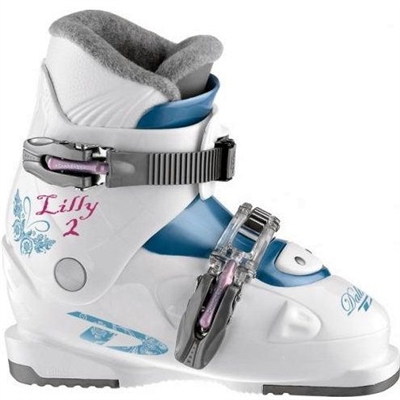 This combination of width and stiffness will provide comfort and good control on the slope.
This combination of width and stiffness will provide comfort and good control on the slope.
The size is selected without a margin, fine tuning and fitting of the boot is necessary, bootfitting is recommended.
• ADVANCED - confident riding style, average speed, different slope conditions (prepared, broken, off-piste).
You strive to progress on the slopes in any condition, but you are still at the stage of perfecting your technique.
Choose models with a comfortable last from 102 mm, with stiffness from 90 to 110 for men, for girls from 70 to 90. In such a boot you will be comfortable all day long.
• BEGINNER - calm style, low speed, prepared track.
You spend time on slopes in good condition, ride quietly or just learn.
A wide boot last from 102-104 mm and a stiffness of no more than 90* is best for you, for girls no more than 80.
returns. Also, when choosing a level of skiing, be sure to consider your plans for the next 2-3 seasons.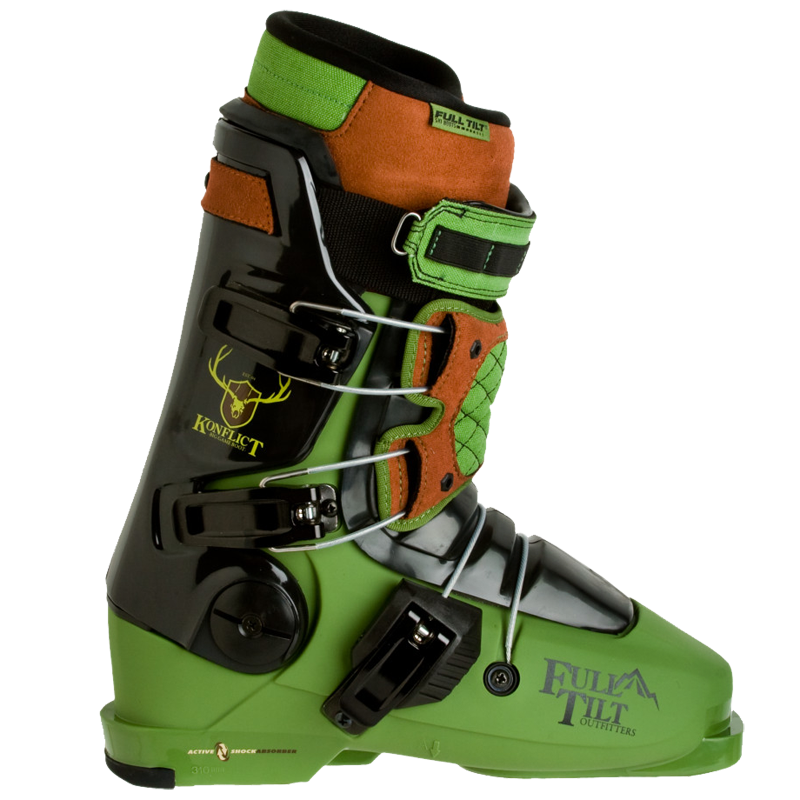 If you're in good physical shape and spend enough time on the slope, you can improve in technique over the course of the season.
If you're in good physical shape and spend enough time on the slope, you can improve in technique over the course of the season.
2. Rules for fitting and sizing
Ski boots, like all sports shoes, are measured in centimeters (Mondopoint, MP). In order to accurately know your size, you need to measure your foot. Put a sheet of paper on the floor, put your foot on it, relax your foot, make marks on the heel and the most protruding toe, measure the resulting length, be sure to measure the other foot, round the resulting value to 0.5 cm. At the same time, measure the width of the foot, this value is the same may be useful to you when choosing shoes.
All ski boot manufacturers produce an outer boot of the same size for 2 sizes, that is, size 27 and 27.5 will have the same outer boot, but will have different liner sizes.
Size Chart
Try on your boots with the ski socks you will wear. If you do not already have specialized ski socks, be sure to purchase them in advance.
Put on and try on boots while standing! Put on your boots, fasten the clips, starting from the bottom. The position of the foot in the boot when skiing will be different. In order to understand if the boot is right for you, take a “ski stance” - bend your knees slightly, the lower leg rests on the boot tongue, the body is above the knees, the weight is evenly distributed throughout the foot, the heel does not come off the insole. Swing a little, shifting your weight from toe to heel. In this position, the foot moves back and assumes the correct position. Tighten the clips, if necessary, tighten the top strap.
How should it feel? The heel sits tight, the toes do not rest, but you can feel the toe of the boot. The boot tightly fits the entire foot and lower leg without critical pressure points. Bend your knees to the right or left without lifting your feet, sway, shifting weight from toe to heel, or rise on your toes, the foot should not go inside the boot, the heel should not hang out and move up and down or right and left.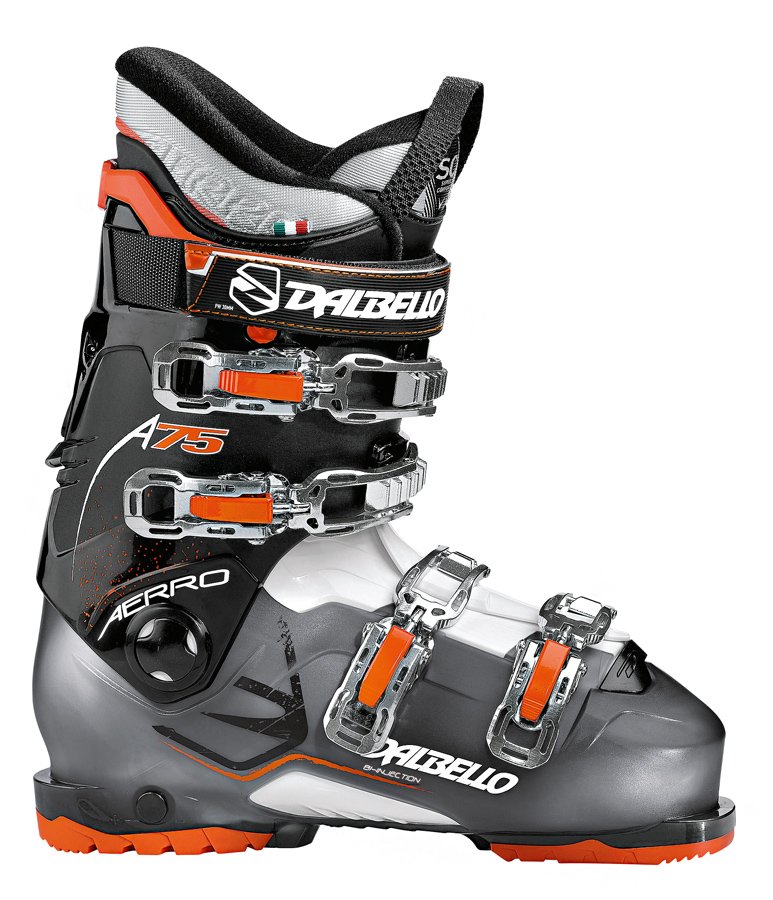
The most common mistake when trying on a boot is that at the beginning of the fitting it may seem to you that the boots are small. This can be a deceptive feeling. Do not rush to make a decision until you try on the boot according to all the rules. Walk around, stand in a ski stance, try to feel the pressure points. Most Head boots have a thermoformable liner. The boot will sit better and fit better after a couple of days on the slope. You can also thermoform your boots in a special oven that heats up the inner and outer boot and adapts it even better to your foot. Have a boot fitting done in a shop or specialist workshop.
If you still feel like your boots are too small, try on a size up and compare how you feel. Be careful, if the boots are too big for you, then after a few days on the slope you will feel discomfort. The boot will sit too loose, this will affect the reduction in handling. And with even more tightening of the clips to compensate for the free space, signs of numbness may appear.
3. Suitable width and volume of boots is an important aspect when choosing
Choosing the right size is half the battle. The width of the last and the internal volume of the boot are also very important components of the selection. Models are divided into narrow ones less than 98 mm, medium ones 100-102 mm and wide ones more than 104 mm (the width of the shoe hereinafter is indicated at size 26.5, with an increase / decrease in size, the width of the shoe increases / decreases proportionally). Boot volume is the internal volume in cubic centimeters. For example, for sports workshop boots with a last width of 93 mm, the volume is 1500, and for station wagons with a width of 102 mm - 2100. The smaller the volume of the boot and the narrower the last, the more precise the control. The wider the last and more internal volume - the higher the comfort.
Please note that beginners with narrow feet may have trouble fitting because beginner models are wide, in this case narrow expert boots can be fitted.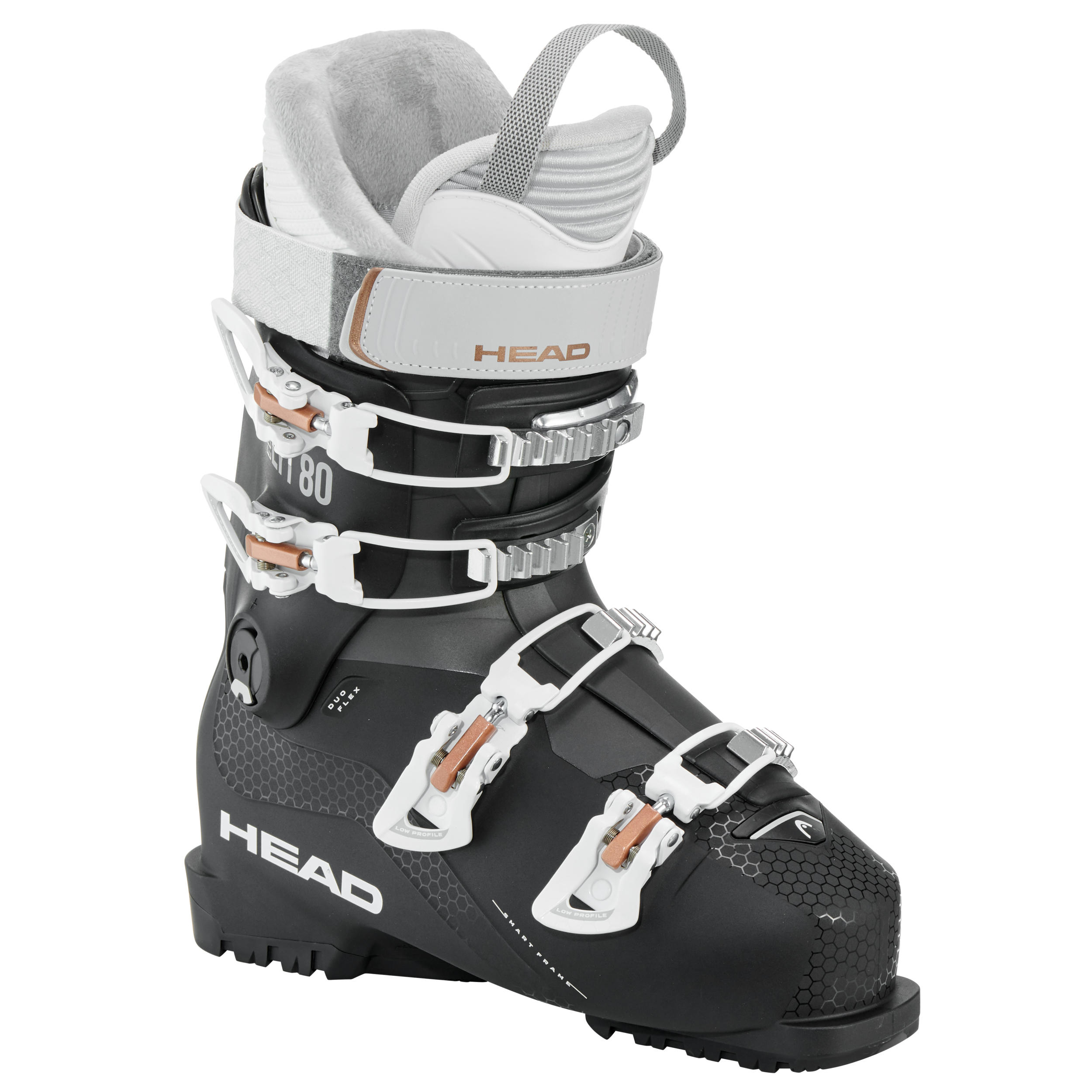 Likewise, judges with wide feet will also run into problems, since all expert boots are less than 100mm wide, this problem can be solved with a bootfit.
Likewise, judges with wide feet will also run into problems, since all expert boots are less than 100mm wide, this problem can be solved with a bootfit.
Comfort in the instep and arch area is very important. A shoe that is too narrow can cause serious discomfort on the slope. Spend at least 15 minutes in fully zipped boots.
4. Which hardness should I choose?
The flex index of the model is responsible for the rigidity of the plastic and the fixation of the boot, it is also responsible for handling and control, as well as the width / volume of the last. Flex ranges from the softest 60 (for beginners) to the very hard 160 (for athletes). Very often, stiffness is displayed in the name of the boot, for example, the Advant Edge 105 has a stiffness of 105 units. In some models, the stiffness can be adjusted by 10-20 units.
Male athletes choose a stiffness in the approximate range of 120-140, experts 110-130, for advanced and improving we recommend choosing a stiffness of at least 90-100.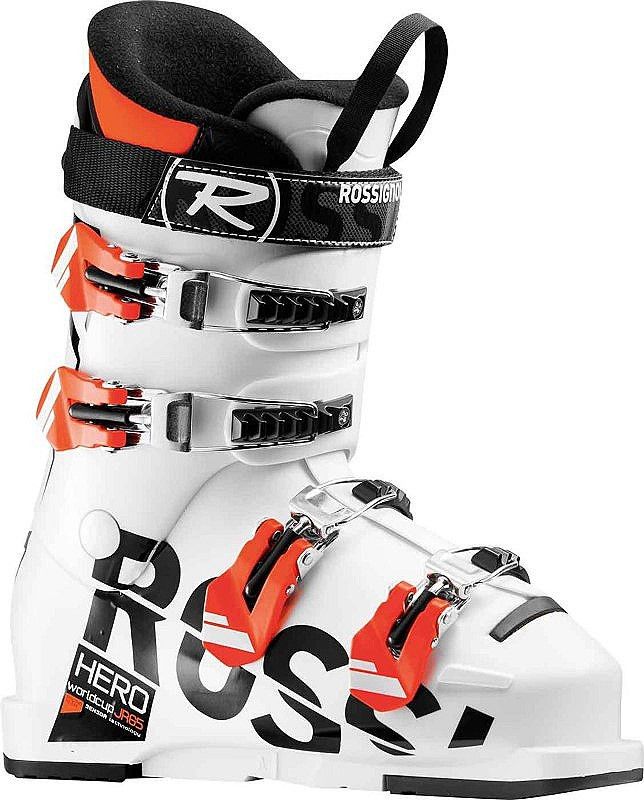 For women, shoes are selected with a stiffness of 10-20 units less than for men.
For women, shoes are selected with a stiffness of 10-20 units less than for men.
The choice of firmness that suits you depends on your skill, riding style and the type of slopes you prefer. The more aggressive your style of skiing, the harder the slopes and the higher the speed, the more control the skis require, the narrower the boot last and the higher the rigidity. Riding in the park or freeride requires less rigidity.
5. Women's ski boots
Women's boots are characterized by great comfort and a special geometry that better suits women's feet. Girls weigh less and ride less aggressively, so models with less stiffness will suit them.
For beginner girls, a hardness of 50-70 is suitable, for advanced and improving from 70 to 90, for expert girls and athletes 100-110.
The uppers of the girls' boots are lower and slightly wider to better fit the shape of the female calf muscle. The liner is usually warmer, as comfort is the most important thing for women.
If you have any questions, be sure to ask your consultant!
How to choose the right size ski boots, how to choose boots for yourself - Sportmaster Media
Table of Table
Choice on the level of training of the skier
Boat volume and lifting height
Tight, or Flex Index
Models for women
Boits
Width of the pad
How to measure the shoes 9000 9000
did not have time to choose skis, read this article.
What determines the choice of ski boots:
- the level of training of the athlete;
- shoe size;
- pad width;
- material stiffness;
- design features of the model;
- the temperature at which you are going to ride.

Table of Table
Choice on the level of training of the skier
Boat volume and lifting height
Strike, or flex index
Models
The size of the boots
How to properly measure the shoes 9000 9 perform turns at low speed, so they rely on comfort. And vice versa: advanced athletes choose more rigid shoes, because they allow you to accurately transfer forces and make movements jewelry.
Style: calm
Speed: low
Slopes: prepared
You are just starting to master the technique of skiing and choose gentle slopes (blue slopes).![]() You need comfortable boots with soft or medium hardness. The width of the last should fit the foot so that the foot does not dangle.
You need comfortable boots with soft or medium hardness. The width of the last should fit the foot so that the foot does not dangle.
Important! A skier with good physical fitness can advance to the next level of difficulty during the first season. In this case, he will need stiffer shoes
Style: confident
Speed: medium/high
Slopes: prepared, broken, park and pipe, off-piste precise ski control. A suitable choice is boots of medium hardness.
Important! Most amateur skiers stay at an advanced level for a long time, so these boots can last several seasons in a row
Ski boots
44,799 RUB
55,999 RUB
Salomon | Ski boots Salomon S/PRO 110 GW
Buy
Final price
28 599 ₽
head | Ski boots Head Edge LYT 100
Buy
New collection
Final price
41 499 ₽
head | Ski boots Head Nexo LYT 110 GW
Buy
New collection
Final price
41 499 ₽
head | Women's ski boots Head Nexo LYT 100 W GW
Buy
New collection
Final price
32 499 ₽
head | Ski boots Head Edge LYT 110 GW
Buy
New collection
Final price
42 999 ₽
head | Ski boots Head Edge LYT 130 GW
Buy
New collection
Final price
32 499 ₽
head | Women's ski boots Head Edge LYT 90 W GW
Buy
Final price
32 999 ₽
Fischer | Ski boots Fischer The Curv 110 Vac GW
Buy
Final price
32 499 ₽
Fischer | Ski boots Fischer RC One 100 Vacuum Walk
Buy
16,999 RUB
19,999 RUB
Roses | Children's ski boots Roces Idea
Buy
17,849 RUB
20,999 RUB
Roses | Children's ski boots Roces Idea
Buy
$21,249
$24,999
Roses | Children's ski boots Roces Idea
Buy
Style: aggressive
Speed: very fast
Slopes: off-piste, competition, icy and steeper slopes
You confidently navigate different types of slopes, including bumpy and icy slopes.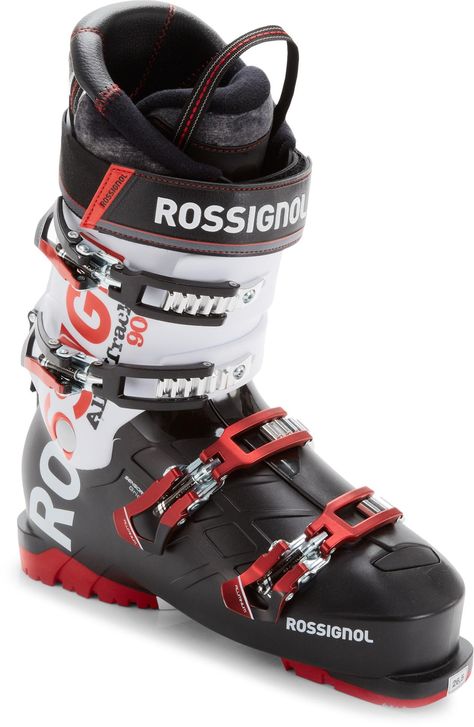 Ski control is critical here, so you should choose hard boots with the right fit for your foot. In some cases, ski boots may be smaller.
Ski control is critical here, so you should choose hard boots with the right fit for your foot. In some cases, ski boots may be smaller.
The size of the boot and the height of the instep determine how comfortable the shoe is. Volume is usually (but not always) related to last width. Shoes with a narrow last tend to have less volume in the midfoot, instep and heel, while shoes with a wide last have more interior legroom.
Important! When trying on, keep in mind that discomfort in the instep and arch of the foot may not appear immediately, so it is better to walk in the selected shoes for at least 15 minutes - this time is enough to identify zones or points of discomfort
The stiffness of the boot is usually indicated on the label. and allows you to understand how difficult or easy it is to bend the boot forward The hardness is determined by the Flex Index (FI).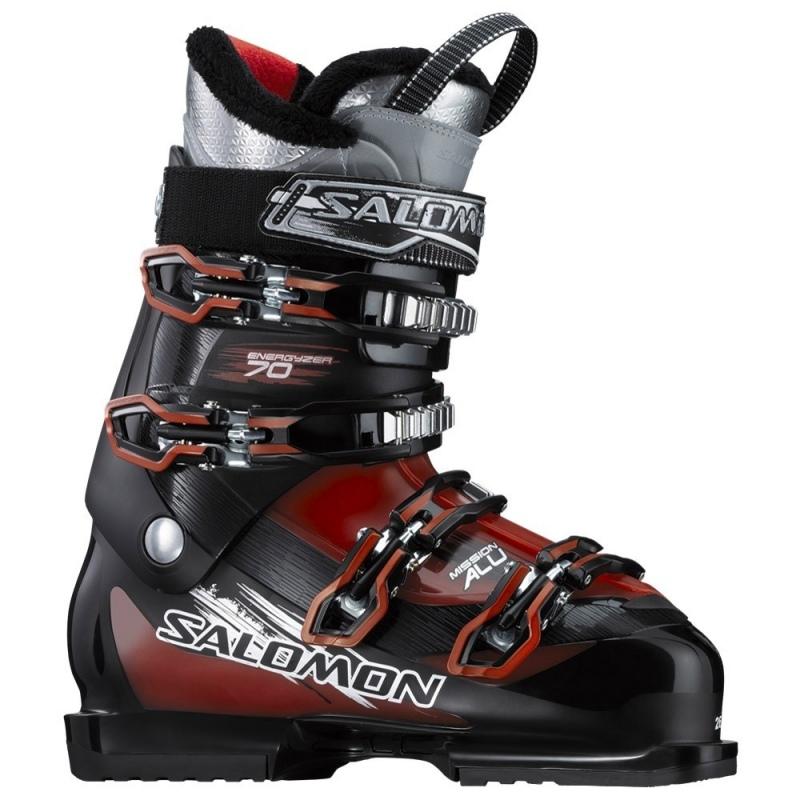 The lower it is, the softer the shoes; the higher, the stiffer the boots. It is usually indicated by numbers: from 70 (soft), from 130 (hard, expert), to 170 (professional, very hard). Some companies use their own hardness index, indicating, for example, "9", not "90". Often this parameter is included in the boot marking, for example X Pro 130 b.
The lower it is, the softer the shoes; the higher, the stiffer the boots. It is usually indicated by numbers: from 70 (soft), from 130 (hard, expert), to 170 (professional, very hard). Some companies use their own hardness index, indicating, for example, "9", not "90". Often this parameter is included in the boot marking, for example X Pro 130 b.
Important! There is no single method for determining stiffness for all manufacturers. Different brands of boots with the same flex index can feel different on the foot. The stiffness index should be used as a starting point when choosing ski boots
The lower the level of the skier, the less rigid boots should be chosen. If you are a beginner male, your stiffness index will most likely be in the range of 80-90 units. For women, the optimal indicator is 70-80 units. For intermediate and advanced skiers, models with a stiffness of 90-110 are well suited, and for experts - 120-130.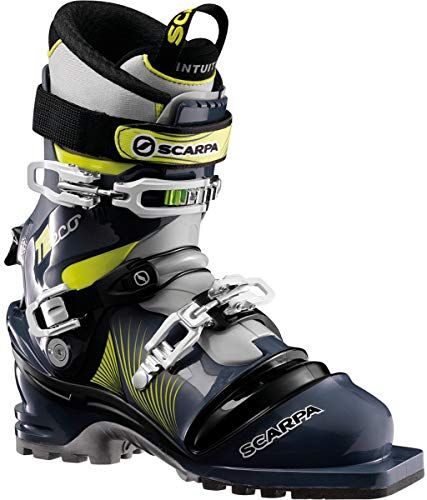 Athletes prefer boots with a flex index of 140–170.
Athletes prefer boots with a flex index of 140–170.
| Beginners | Advanced | Experts | Athletes |
|---|---|---|---|
| 80 | 90 | 100 | 110 | 120 | 130 | 140+ |
Important! Heavy skiers with bulky builds are advised to choose a stiffness slightly higher than recommended for them.
Hard, icy sports trails require more stiffness, skiing in the park less.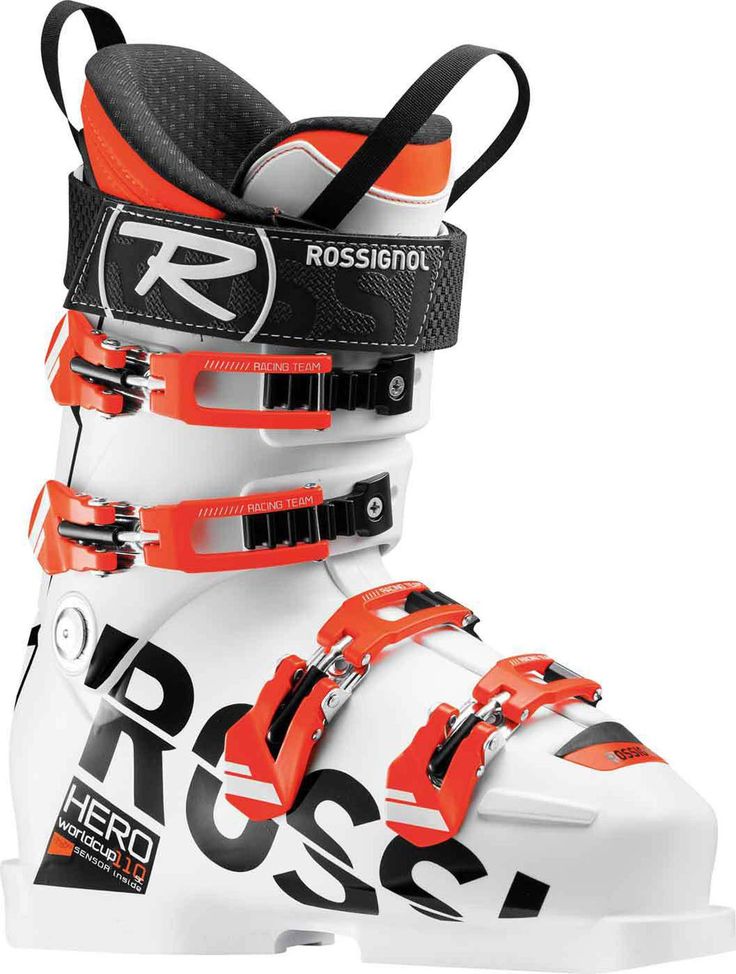
EXPERT TIP
While trying on, sit down a bit while wearing boots to see how your foot will feel while riding
Alpine skis
New collection
Final price
45 999 ₽
Fischer | Alpine skiing Fischer Progressor F17 + Fischer RS10 GW
Buy
New collection
Final price
46,999 ₽
Fischer | Alpine skiing Fischer Progressor Race + Fischer RS4 Z11 GW
Buy
New collection
Final price
52,999₽
Fischer | Alpine skiing Fischer Progressor F18 + Fischer RS11 GW
Buy
Final price
108,999 ₽
Fischer | Alpine skiing Fischer RC4 THE Curv DTX M-Track + Fischer RSX 12 GW Powerrail Brake 85
Buy
Final price
88 999 ₽
head | Skis Head Wc Rebels E-Race PRo WCR 14 + Head Freeflex 14 GW Brake 85
Buy
Final price
73 999 ₽
head | Skis Head Supershape e-Titan SF-PR + Head PRD 12 GW Brake 95
Buy
Final price
73 999 ₽
head | Skis Head Supershape E-Magnum SF-PR + Head PRD 12 GW Brake 85
Buy
Final price
73 999 ₽
head | Skis Head Supershape E-Rally SF-PR + Head PRD 12 GW Brake 85
Buy
Final price
54 999 ₽
head | Skis Head Wc Rebels E.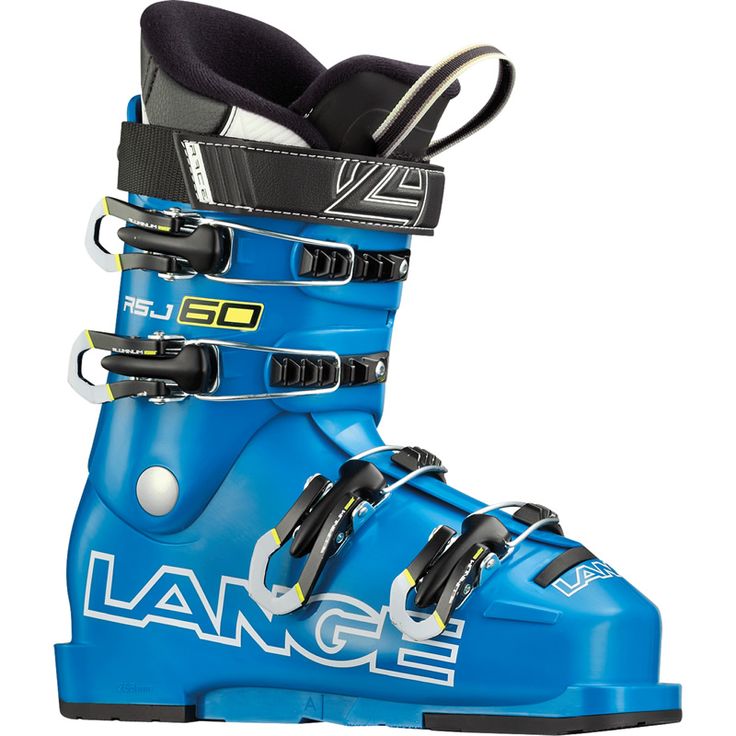 SLR LYT-PR + Head PR 11 GW Brake 78
SLR LYT-PR + Head PR 11 GW Brake 78
Buy
Final price
64 499 ₽
head | Skis Head Shape E-V10 SW AMT-PR + Head PR 11 GW Brake 90
Buy
Final price
46,999 ₽
head | Skis Head Shape E.V5 SW AMT-PR + Head PR 11 GW Brake 85
Buy
Final price
33 499 ₽
head | Skis Head Shape V2 AMT-PR + Head PR 11 GW Brake 85
Buy now
For beginners, girls can try boots with stiffness 60-70 for the first time, advanced - 80-90, experts - 90-105 and athletes - 110+.
| Beginners | Advanced | Experts | Athletes |
|---|---|---|---|
| 60 | 65 | 70 | 80 | 85 | 90 | 90 | 95 | 100 | 105 | 110+ |
In addition to stiffness, women's models differ in shaft height - it is made wider to better match the shape and size of the calf muscle in women. They also have a different last shape - the heel is narrower.
They also have a different last shape - the heel is narrower.
In addition to design features, the developers also take into account the fact that a higher level of comfort is important for women, so women's inner shoes are often made warmer than men's ones.
The choice of the size of your ski boots depends on the comfort of your skiing: they should sit comfortably in the ankle, do not pinch or dangle.
To select ski boots, measure your foot length in centimeters. Place your foot on a piece of paper, mark the positions of your thumb and heel, and measure the distance between the marks. Round the result to 0.5 cm - this will be your Mondopoint (MP) size.
You can measure the length and width of the foot more accurately at a special stand in Sportmaster PRO offline stores.
- Stand on the measuring stand with your heels resting against the back stop.
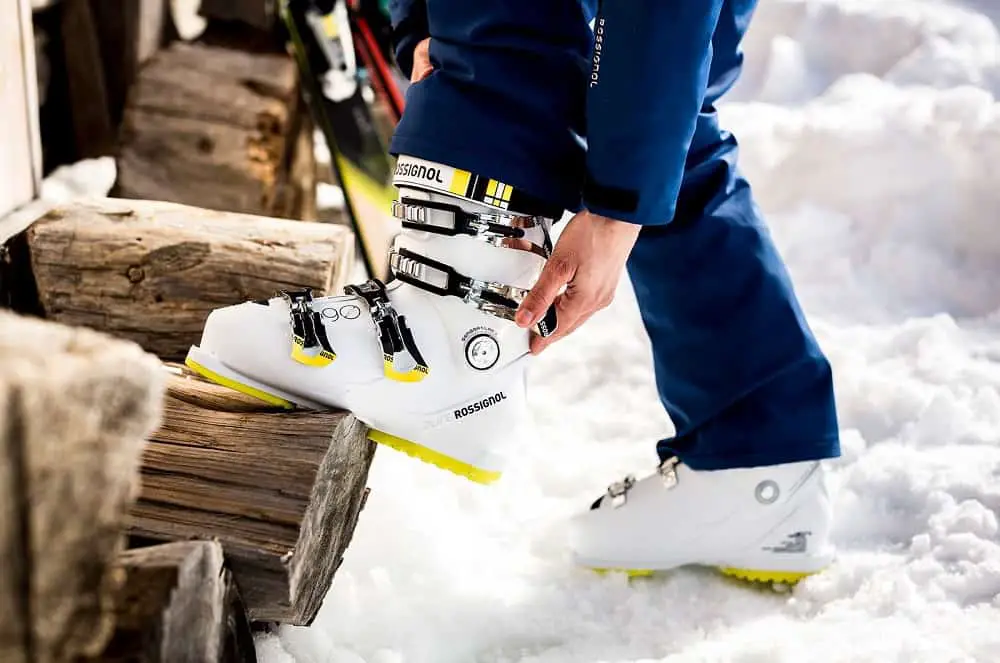 Move the moving rulers close to the foot
Move the moving rulers close to the foot - Determine the length and width of each foot using the rulers of the analyzer
Important! Manufacturers do not make half-size outdoor boots: boot sizes 26.0 and 26.5 will have the same outdoor boot. The difference between them is in the thickness of the insole or inner boot
If the boot feels tight or wobbly when you try it on, take a pair with the outer boot one centimeter larger or smaller.
All major manufacturers offer pads in various widths. They are selected according to the width of the foot, measured in the most voluminous place.
| block | Width of the foot |
|---|---|
| Narrow college 2 | 2 2 2 2 2 2 2 2 2 2 2 2 9038U0588 Medium block100 mm |
| wide block | 102+ mm |
The width of the pad is always indicated for size 26/25. 5 and decreases by a size of a rally of 2 mm Mm one up or down.
5 and decreases by a size of a rally of 2 mm Mm one up or down.
Important! Super-narrow 95mm lasts are available, but these boots are only used by professional athletes.
Boots with a 100mm last fit most people.
Models of different manufacturers with the same last width may differ in heel width, instep height and location of the ankle grooves.
Professionals with wide feet find it difficult to choose a model: many hard boots have a narrow last. Difficulties also arise for beginner skiers with narrow feet - soft boots are too wide
Solution: choose models whose outer boot can be molded in a wide range. These are models with CustomShell 360 technologies from Salomon, Vacuum from Fischer, MemoryFit from Atomic, FormFit and AFT from Head, C.A.S. at Tecnica.
If you have calluses, bone spurs, abnormally long toes, or pronounced bony protrusions, see a bootfitter after you purchase your boots to eliminate points of discomfort and fit the boot to your foot.
Try on your boots directly with the ski socks you plan to wear.
- clips; - strap; - canting; - outsole; - stiffness regulator; - inner bootPut on your boot. Until the clips are fastened, he will put pressure on the thumb in front, so you need to "put" the heel in place. While sitting, bend your leg at the knee and move the foot as far back as possible so that the heel fits snugly against the boot. Then fasten the second clip from the top to fix the position of the leg, and then the rest of the clips, starting from the bottom ones.
The size is right for you if the heel is firmly pressed and the toes do not rest, but only feel the front of the boot. After that, fasten the clips on the shaft and tighten the power belt. Put on the second boot, zip up and stand in the ski stance for 5-10 minutes.
Important! The boot must fit snugly around the foot, preventing the foot from moving sideways or back and forth.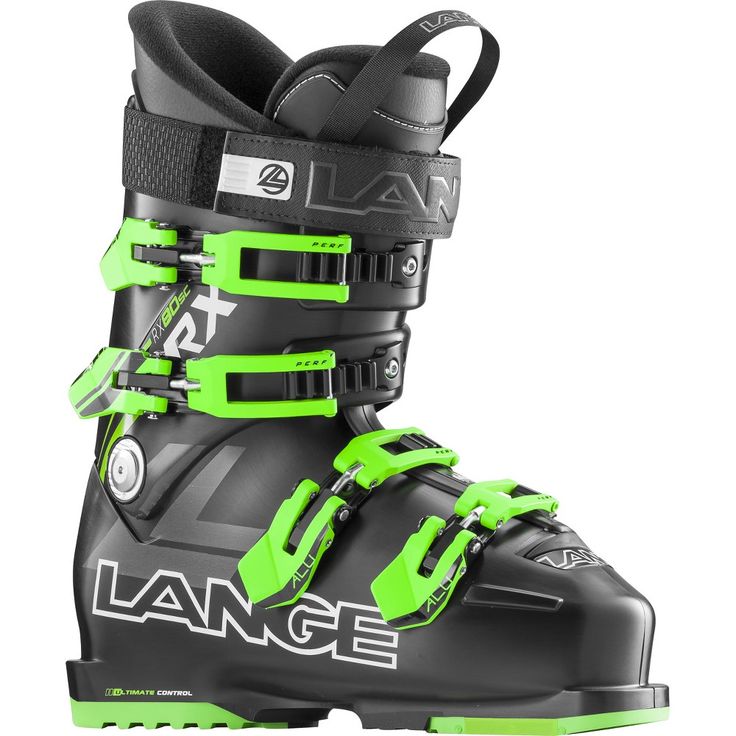 If you try to stand on your toes, the heel should not come off the insole
If you try to stand on your toes, the heel should not come off the insole
Ski Bindings
Final price
11 999 ₽
head | Ski bindings Head Attack 11 GW Brake 110 [A]
Buy
$38,499
$54,999
marker | Ski bindings Marker MARKER ALPINIST 12
Buy
£23,999
£29,999
marker | Mountain ski bindings Marker Griffon 13 ID; 110mm
Buy
23 999 ₽
29 999 ₽
marker | Ski bindings Marker Griffon 100 mm
Buy
$31,499
$44,999
marker | Mountain ski bindings Marker Jester 16 ID; 120 mm
Buy
£37,799
£53,999
marker | Ski bindings Marker MARKER ALPINIST
Buy
60,899 RUB
86,999 RUB
marker | Mounts ski Marker KINGPIN 100 - 125 mm
Buy
16,799 RUB
20,999 RUB
marker | Ski bindings Marker Squire 11 ID; 110 mm
Buy
$57,399
$81,999
marker | Ski bindings Marker KINGPIN 10; 100 - 125 mm
Buy
$23,099
$32,999
Salomon | Ski bindings Salomon Warden MNC 13; 100 mm
Buy
52,499 RUB
74,999 RUB
Atomic | Ski bindings Atomic Shift MNC 10; 100 mm
Buy
$22,539
$32,199
Atomic | Ski bindings Atomic N Warden MNC 13; 90 mm
Buy now
EXPERT TIP
Don't buy boots "too much": you will quickly find that they are too loose.